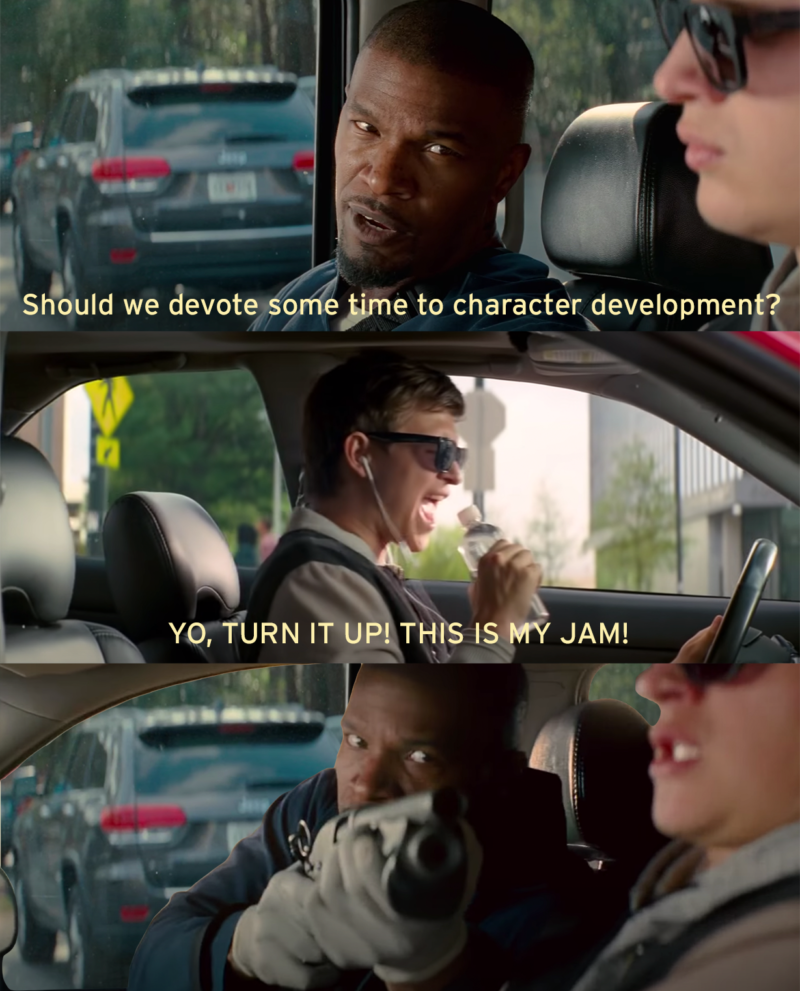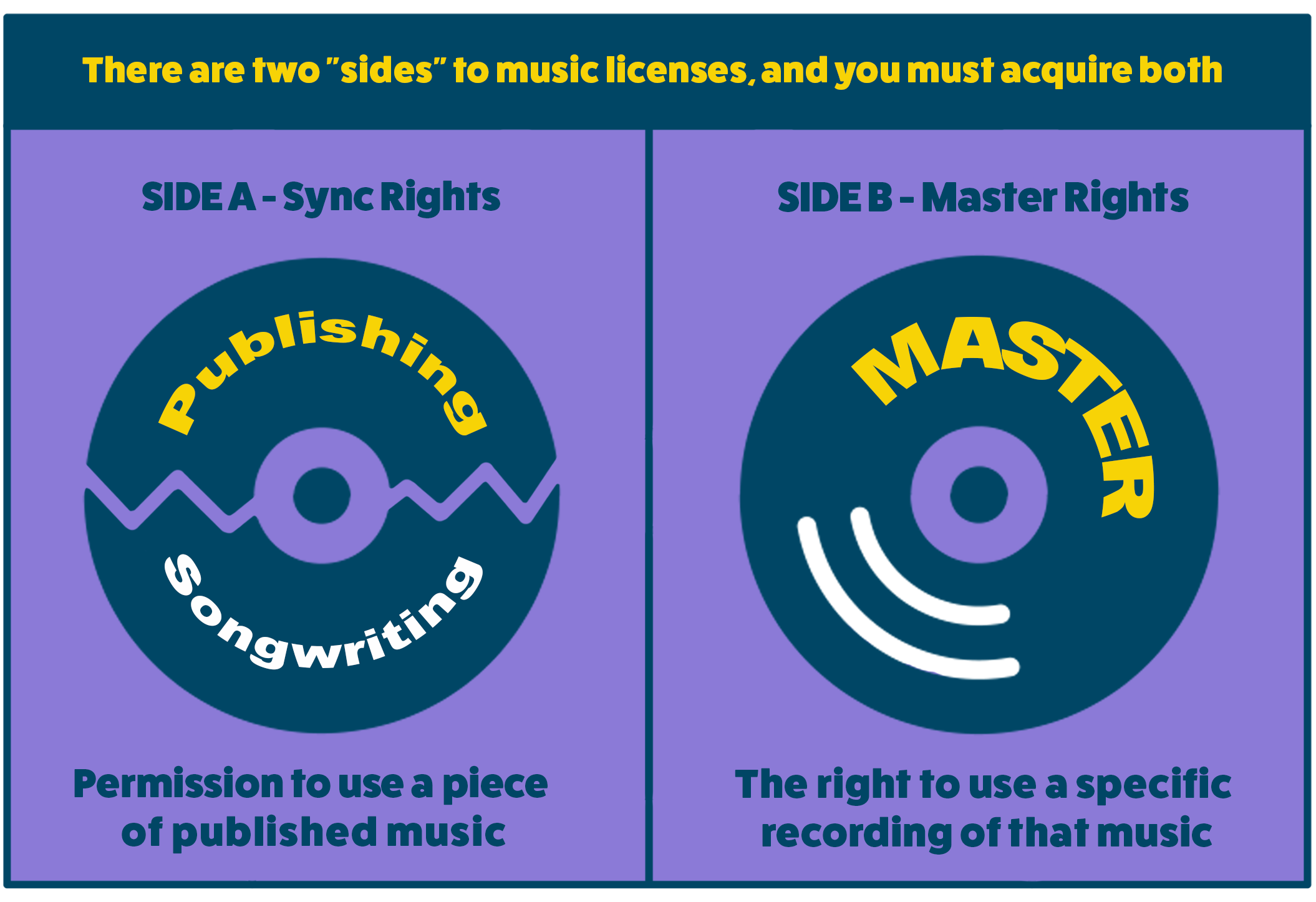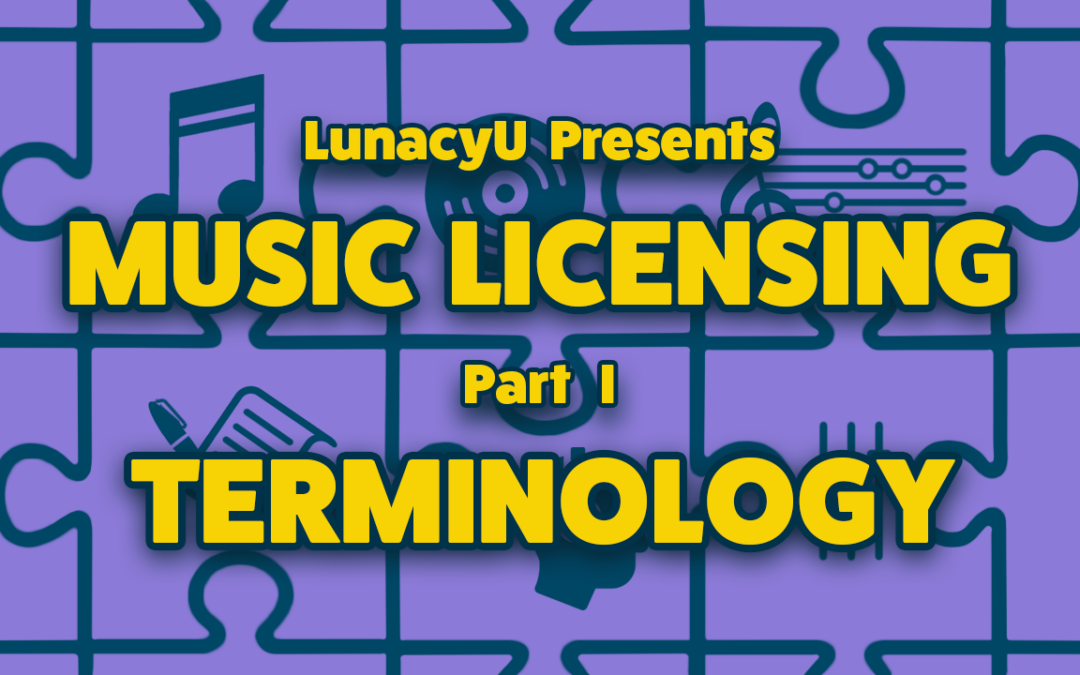At LunacyU our expertise goes beyond our popular indie film financing course. We’re here to help you navigate all aspects of indie film production, from development to distribution. And now, as a supplement to our film music master class, we’ve created this practical guide to music licensing. This multi-part series will walk you through all the fundamentals — and some of the complexities — involved with licensing music for your content. Whether you’re looking for original music or securing licenses to pre-existing material, obtaining music rights can be a challenging and time-consuming process that will hurt the film if it’s an afterthought. So if you’ve always found this process mind-numbing, prepare to be, well, de-numbed!
Some Key Terms
First, let’s nail down some key music terms. Ever heard some expert talk about diegetic and non-diegetic sound in a movie and wonder what they meant? Wonder no longer.
Diegetic refers to sound that characters can hear in the story. Examples include dialogue, sound effects (like glass breaking), and source music (music that originates from somewhere in the scene, such as a car stereo or a live band). Non-diegetic describes any sound that exists outside of the world of the film (which the characters are not aware of). Examples include voiceover narration, a song that might drive a montage or time lapse, and the musical score.
Another important distinction is between score and soundtrack. The score is the music composed specifically for a particular film. There are usually no lyrics so it can play in the background to underscore dialogue or enhance action sequences. The soundtrack, on the other hand, usually refers to the songs — original or licensed — that appear in the film. The score and the soundtrack help shape the film’s mood.
Don’t believe us? Watch this:
Choosing Your Music
Now that we have the jargon down pat, let’s talk about some of the factors that go into choosing music for a film. Our best advice is to start early; don’t wait until post-production to start thinking about the music. The score might not be completed and licensing deals might not be finalized until after the edit, which can leave the music feeling tacked on. You want your licenses buttoned up as soon as possible so people don’t have second thoughts if things don’t go well or get greedy should the film develop positive buzz. The earlier you can involve a composer and music supervisor the better. And if you’re planning on doing either of those jobs yourself, you’ll really need the head start.
The first decision you need to make is whether your film will have a score, a soundtrack, or a combination of the two. This is largely a matter of personal taste, but there are some genres that lend themselves more to one or the other. Horror films tend to favor a moody score with heavy instrumentation to punch up the big scares, while rom-coms often rely on upbeat pop soundtracks. A period piece set in the1970s will probably want a soundtrack of songs from that era, but one set in the 1770s would clearly favor a more classical orchestral score. On the other hand, you can also contradict expectations by cutting a fight scene to a piano sonata, or dropping a modern hip-hop track into a period costume drama.
Next you’ll want to break down your script and find the moments where the music will be most critical. Chase sequences and montages are often driven by music. A particularly emotional or suspenseful moment might be significantly enhanced by the right score. But remember that the music shouldn’t create emotion, it should compliment and amplify what’s already in the scene.
And don’t be afraid of silence. Filling your film with wall-to-wall songs can leave it feeling like an overlong music video (Looking at you, Baby Driver). It can overpower performances or distract from the real focus of a scene. Sometimes less is more.

Finally, you might have some specific ideas about your film’s music, but it’s critical to always keep an open mind. Allow yourself to be surprised by the suggestions of your collaborators, or your own moments of inspiration. It might be necessary to pivot from your first choice for technical reasons, and remaining flexible will make that moment easier. On that note…
Beware Temp-itis
During the editing process, the editor or assistant editor will often add temporary music or sound effects before screening a cut for the director and producers. This is often the only way to know if a cut is effective. Action sequences and jumps scares, for example, rely heavily on sound and music cues.
The danger of temp tracks, however, is a horrible affliction called temp-itis! Temp-itis occurs when the filmmakers grow so accustomed to the temp sound/music used in preliminary edits that they can’t imagine the scene sounding any other way. This puts the sound designer or composer at a huge disadvantage when it’s their turn to contribute creatively. More importantly, temp sound and music might be difficult or impossible to license, even with a healthy budget.
Tony Zhou breaks down the dangers of temp-itis in this episode of Every Frame A Painting.
One way to avoid temp-itis is to start working with your composer immediately, so he or she can provide an original temp score for your early cuts, or just a series of tonally appropriate cues from their prior films. But the best way to prevent temp-itis is to stay flexible and trust your collaborators, especially ones who are approaching the project with fresh ears.
And avoid temping with the Stones’ “Gimme Shelter,” unless your last name is Scorsese.
Licensing Music
As much as you try to avoid it, temp-itis will happen sometimes. So what do you do when you feel you must put a specific piece of music in your movie? You’re going to have to license the rights to that music.
To use a pre-recorded song in film you need two licenses — think of them as two sides of a vinyl record. The two licenses are for Synchronization Rights (commonly shortened to Sync Rights) and Master Rights (aka Master Use or Recording Rights). The simplest way to differentiate between these two is to think of Sync as the rights to sheet music (lyrics, melody, etc.) and Master as the physical recording of a specific performance.

We’ll dive deeper into acquiring these rights in a future post, but here are a few key things to keep in mind:
- Both types of rights may be owned by more than one person or entity, especially the sync rights, since many songs have multiple songwriters.
- Master Rights are commonly owned by record companies/labels, as they pay artists to make recordings.
- Even if you have licensed the Master Rights, you cannot legally use a pre-existing recording unless you have also secured the sync rights. Sometimes you can save money by recording your own master if you already have the sync license in place. By that logic, you should always look to lock in a sync license first.
- Sync rights also consist of two parts: publishing rights and songwriting rights. Oftentimes the publisher administers both “sides” of the sync license, but you always need to confirm this. If the publisher only handles the publishing rights, you will need to secure a sync license from the songwriter(s) as well as the publisher. If you’ve been paying attention to the news of late, you’ve no doubt heard about major songwriters/artists (Bob Dylan, Stevie Nicks, others) unloading all their publishing catalog rights for massive paydays. The reason buyers are willing to pay so much is because these rights generate revenue every time a song is streamed, played on the radio, placed in a movie, and so on.
Now that you have an understanding of the kinds of rights you are going to need to license, our next post will tackle figuring out who owns these rights, and how best to approach them. We cover that in Part II of our music licensing series, and Part III tackles hiring and working with composers. And check out our film music master class here!

